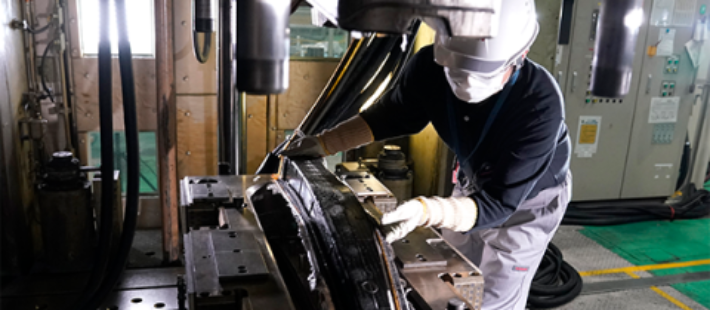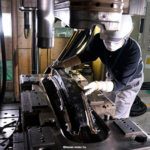In order to meet consumer’s demands for safety, comfort, and autonomy, the various automotive companies continuously seek innovation in various fields. One of the driver’s needs is for example the lightness of the vehicle in order to achieve the expected results.
The choice of materials becomes the top priority.
Carbon Fiber Reinforced Plastics (CFRP) are commonly used in various industries such as aerospace. In the case of the automotive sector, they were too expensive to industrialize both in terms of time and cost.
Hideyuki Sakamoto, EVP of Nissan Motor Co. explains
“We have always considered CFRP as a material for future generations of cars. But when it comes to reality, CFRP can be used only for limited models and appears to be more challenging for mass-market production. Indeed, costs are high, and complex designs are required to shape CFRP. The challenge was to industrialize its production process in order to reduce costs and development time.”
CFRP mass production project
Starting from 2015, ESI Group supports Nissan in the design of industrial products and production methods of different vehicles, supporting its CFRP challenge.
In 2018 their collaboration strengthened, the two companies kicked off the CFRP mass production project.
The process of Compression Resin Transfer Molding (C-RTM)
However, Nissan’s engineers have adopted a new approach with the help of the ESI solution. To overcome the difficulty of modeling the CFRP parts, they applied Compression Resin Transfer Molding (C-RTM) method. This process involves:
- forming carbon fiber into the right shape
- setting it in a die with a slight gap between the upper die and the carbon fibers
- injecting resin into the fiber and leaving it to harden
Nissan’s engineers elaborate a system to reproduce the permeability of carbon fiber resin. by visualizing the flow behavior of resin in a mold using an in-mold temperature sensor and a transparent mold. In fact, they observed and compared the behavior of the resin flow in two different molds: in a die using an in-die temperature sensor and a transparent die.
The result of the successful simulation was a high-quality component with shorter development time. Using this Virtual Prototype of the product, Nissan triumphed in its mission creating:
- a high-quality component
- with a development time reduced by 50%
- reduced by 80% of a single molding
Cristel de Rouvray, CEO of ESI Group adds
“We are proud of the support we have brought Nissan over the years and throughout this project. We have helped them succeed in the full development process, from the design to the manufacturing of mass-produced CFRP parts, thus enabling their breakthrough for lighter and safer vehicles. Nissan’s success embodies our mission to enable industrial players to commit to outcomes. With our Smart Manufacturing solution and our historical expertise in materials, we helped them reach their ambitions”
 |
Subscribe now to our quarterly Compositi newsletter
|
Source: ESI Group













